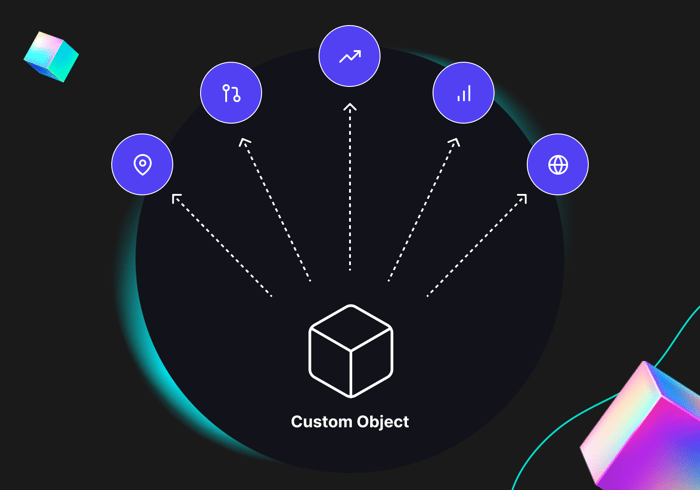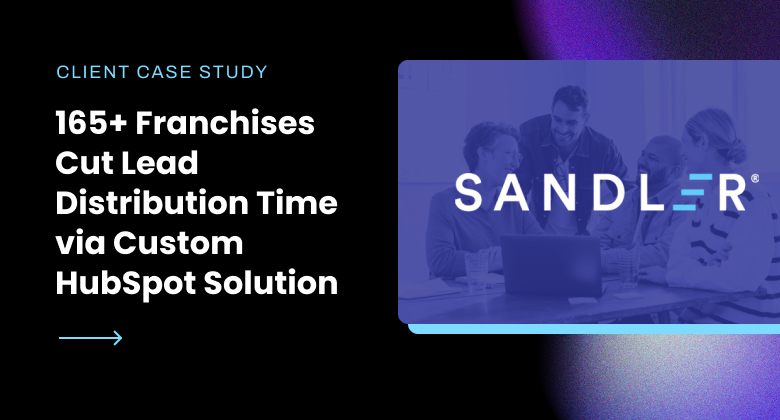HubSpot Integrations Technology
Here's What to Know About iPaaS and Why You Should Consider One
06/02/2022 • 3 min read • Written by Lynton Team
Table of Contents
On a daily basis, you probably use 5 to 10 tools to get your job done. From tracking and nurturing leads to finances, content, project management and email platforms, you're all over the place. Have you ever thought about all of those systems that you log into on a daily basis?
While integrations help bring disparate systems under one roof, many organizations still struggle with connecting different technologies effectively. Cobbling together plug-ins and integrations can become expensive and may even lead to distrust in your data.
This is the challenge that Integration Platform as a Service (iPaaS) hopes to overcome.
What is iPaas?
iPaaS's main goal is to create a frictionless user experience by bringing all your systems into one platform. iPaaS acts as a pipeline for communication between multiple systems and teams (marketing, sales, services) and allows for seamless data sharing and integration. It leads to more accurate data, better user experiences, the ability to scale and happier employees.
As companies accelerate their digital transformation efforts, iPaaS has become integral to modern business operations. The iPaaS market continues to grow significantly as organizations seek more efficient ways to integrate their cloud and on-premises applications.
How Does iPaaS Work?
As your company grows, iPaaS lets you scale without the need to build out new services. Instead, you can find software that fills your need and integrate it with your platform. Here's how iPaaS works:
- iPaaS providers supply the cloud-based infrastructure and tools needed for creating and managing application integrations
- The platform supports various connection types including RESTful APIs, webhooks, pre-built connectors, and custom integrations
- Once configured, iPaaS creates a centralized ecosystem for viewing, managing, and modifying all data, infrastructure, and operations
All of your teams will be able to access this central ecosystem, allowing for data transparency throughout your company.
Find examples of iPaaS use cases here.
The Benefits of iPaaS
Several benefits of iPaaS have been mentioned already, but they're worth noting again simply because they make daily tasks so much easier.
When you sign on with an iPaaS you can count on:
- Organized data: Rather than gathering data from several sites and crossing your fingers that it's accurate, you can count on data in an iPaaS being up to date with the most accurate, organized data.
- A single source of truth: Log into one system to get your work done, rather than remembering passwords to many software solutions.
- Improved efficiency: Think of the time you'll save working within one platform rather than many.
- Better communication: When all your teams are working with the same information, you can create more targeted campaigns for your customers.
Getting Started with iPaaS
Leading iPaaS providers include Workato, Zapier, Informatica, Mulesoft, Microsoft Azure Integration Services, Dell Boomi, and Oracle Integration Cloud. As you look to align your tech stack, do some research to find which iPaaS will satisfy your business needs. Think about the data you want to integrate and how you want it to flow.
If you aren't ready to commit to an iPaaS, but you do have the need for some smaller integrations, check out a list of offerings in the SyncSmart (our product brand) marketplace.
By: Lynton Team
Lynton is an innovation agency with over 25 years of digital experience, helping organizations tackle marketing challenges, embrace new technologies, and drive growth. We combine creative strategy with technical expertise to build smarter websites, integrate systems, and turn data into actionable results.
You May Also Like

Integrations
What to Know About Out-of-the-Box Integrations vs. Custom Integrations
Do you need an out-of-the-box or custom integration? Discover what's involved in each and how your company should choose betw...
Keep Reading
Integrations
What to Know About the HubSpot Stripe Integration
Discover how the HubSpot Stripe Integration simplifies quoting, billing, and invoicing, enhancing efficiency and customer eng...
Keep Reading
Integrations
Guide to Maximizing Your HubSpot CRM Integration for Technical and Business Optimization
Learn how to optimize your HubSpot CRM integration with technical and non-technical best practices for seamless business grow...
Keep ReadingSubscribe Today

